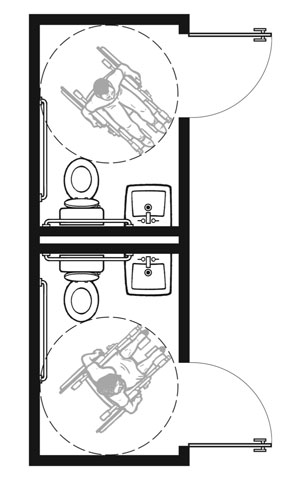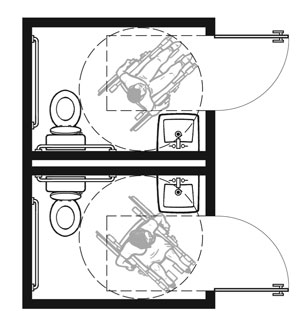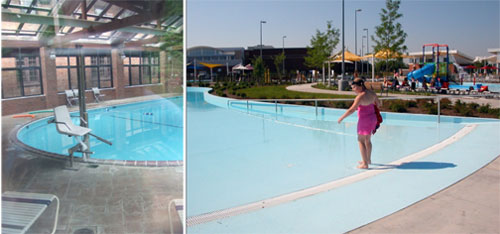
Senior Staff Architect
The U.S. Department of Justice has adopted the 2004 ADA/ABA Accessibility Guidelines and, with a few minor revisions, has renamed it the 2010 Standard for Accessible Design. Starting March 15, when a building is constructed new or being altered there is the alternative of using either the 1991 or 1994 ADA Accessibility Guidelines (ADAAG) or the 2010 ADA Standard for compliance. After March 15, 2012, the 2010 Standard will be the required.
The rumor that I had heard, unfortunately, from several different "informed" sources is that all elements that are not compliant with the new standard must be retrofit by March 15, 2012. That is not the case, however. The use of the term "safe harbor" is causing confusion.
What "safe harbor" means is that elements that were covered in the 1991 ADAAG or the Uniform Federal Accessibility Standards (UFAS), and were built compliant, can stay that way even if the provisions in the 2010 ADA Standard may be different. The most common and obvious application of this will probably be single occupant bathrooms. The 2010 ADA standard requires a clear floor space next to the water closet, while the 1991 ADAAG and UFAS allow for the lavatory to overlap that space. The intent of the new provisions is to allow space for a side transfer to the water closet. The 2010 ADA Standard allows for the door to swing into the bathroom as long as there is a clear floor space past the swing of the door, so that a person can enter the room, shut the door and then maneuver. The 1991 ADAAG and UFAS do not allow the door to swing over the clear floor space for any of the fixtures. While 2010 ADA standard still requires this in multi-stall bathrooms, it is not required for single occupant bathrooms. Once you shut the door in a single occupant bathroom, you can lock it so someone else will not enter and possibly hit you with the door. (The DOJ has done a wonderful service by offering a section by section comparison, including bathroom configuration comparisons in Appendix B to part 36. It is well worth a visit.)
When "safe harbor" is not applicable to items covered in the 1991 ADAAG is when the building is undergoing an alteration or is new construction. For example, if you alter the bathrooms or build new bathrooms, they must comply with the 2010 ADA Standard. In existing buildings, altering the bathrooms may be part of improving the accessible route for primary function spaces.


Two 5'-0" x 7'-3" rooms | 72.50 sq.ft. total
Two 7'-0" x 5'-0" Rooms | 70.00 sq.ft. total
 These are just simple examples and I am sure there are a lot of "what ifs" that are not addressed, but there is not a mandate to totally retrofit by March 15, 2012. The idea is that over time existing buildings will become as accessible as technically feasible. With an aging population that is where the largest market will be, so take advantage of those alterations, additions and new construction to make buildings more accessible for everyone.
These are just simple examples and I am sure there are a lot of "what ifs" that are not addressed, but there is not a mandate to totally retrofit by March 15, 2012. The idea is that over time existing buildings will become as accessible as technically feasible. With an aging population that is where the largest market will be, so take advantage of those alterations, additions and new construction to make buildings more accessible for everyone.The U.S. Department of Justice, Civil Rights Division has posted a new technical assistance document, ADA 2010 Revised Requirements: Effective Date, Compliance Date on its website. The document is available in HTML format and in PDF format.
On another note, the Code Council is very proud that the International Building Code (IBC) is referenced in the 2010 ADA Standard for accessible means of egress. Also, the 2010 ADA Standard and the IBC and ICC A117.1 are extensively coordinated. Coordination of the requirements in the codes and the federal accessibility provisions makes compliance easier for architects and contractors. After all, we are all aiming for the same goal.
Note: Kim Paarlberg can be reached by email at kpaarlberg@iccsafe.org or by calling 888-ICC-SAFE (422-7233), extension 4306.